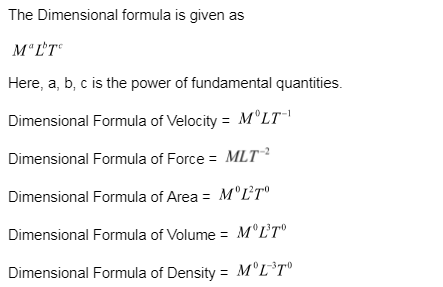The measuring method is necessary to measure or compare physical quantities in everyday life. Therefore, to measure each of the standard sizes, we choose specific units that are accepted worldwide. Other similar quantities can also be expressed in these units and can be measured accordingly. Physical quantities are measured in terms of unit and are known as the standard of that physical quantity. Therefore, to indicate a measurement, we need the numerical value and the unit of it. General units and dimensions are used to determine the physical quantity in standard form.
Fundamental and Derived Physical Quantities
Fundamental Physical Quantities
Fundamental quantities are the elementary physical quantities which do not need any other physical quantity to express themselves. In other words, fundamental quantities cannot be resolved further in terms of other physical quantities. Therefore, the fundamental quantities are referred to as basic physical quantities. The units used to denote these basic physical quantities are called fundamental units.
Examples of fundamental quantities are mass, length and time.
Fundamental and supplementary physical quantities in SI system
Physical Quantity = unit (symbol)
Length = meter (m)
Mass = kilogram (kg)
Time = second (s)
Electric current = ampere (A)
Temperature = kelvin (K)
Intensity of light = candela (cd)
Quantity of substance = mole (mol)
Plane Angle = radian (rad)
Solid Angle = steradian (sr)
Derived Physical Quantities
The physical quantities that can be expressed in terms of fundamental quantities or physical quantities which are derived from the combination of two or more fundamental quantities are known as Derived Physical Quantities.
Examples of derived quantities are speed, acceleration and density.
Coherent system of units is the units of derived physical quantities are determined as multiples or submultiples of certain basic units.
Meter
One meter is 1650763.73 times the wavelength of light emitted in a vacuum due to the electronic transition from the state to the state on krypton 86. But in 1983, the 17th General Assembly on Weights and Measures adopted a new definition of the meter in terms of the speed of light. According to this definition, a meter is the distance travelled by the light in a vacuum during a time interval of 1/299,792,458 of a second.
Kilogram
Mass of a cylinder of platinum-iridium alloy which is kept in the International Bureau of weights and measures saved at Serves near Paris is known to be one kilogram.
Second
One second is the time within which a Cesium atom vibrates 9192631770 times in an atomic clock.
Kelvin
One Kelvin is the temperature at which (1/273.16) is part of the thermodynamics temperature of the triple point of water.
Ampere
The current flowing into each of the two parallel conductors of the infinite length and the insignificant cross-section and placed in vacuum at one meter apart which causes each conductor to experience a force of 2 × 107 Newtons per meter of the length is termed as one ampere.
System of Units
There were three systems of units which were used in different countries. These were the CGS, FPS and MKS systems. But nowadays the whole world adopts the international system of SI units. In this system of units, seven quantities are considered as basic quantities.
CGS System
Centi-meter, Gram and Second are used to define length, mass and time.
FPS System
Foot, Pound, and Second are used to define length, mass and time.
MKS System
Meter, kilograms and second are used to define length, mass and time.
Dimensions and Dimensional Formula
The dimensions of a physical quantity are defined as the power to which the base quantities are raised to denote that quantity. The dimensional formula for any physical quantity is an expression which denotes how and which of the base quantities are involved in that quantity. It is written by enclosing the symbols for base quantities with the appropriate power in square brackets.
Example, dimension formula of mass is [m].
The equation which is obtained by equating a physical quantity and its dimensional formula is known as dimensional equation of that quantity.
The Dimensional formula is given as
Here, a, b, c is the power of fundamental quantities.

Conclusion
Any physical quantity needs a numerical value and a standard or scale for the quantitative
representation. The standard or the scale through which the physical quantity is denoted or represented is called unit.
Fundamental quantities are the elementary physical quantities which do not need any other physical quantity to express themselves.
Examples of fundamental quantities are mass, length and time.
The physical quantities that can be expressed in terms of fundamental quantities or physical quantities which are derived from the combination of two or more fundamental quantities are known as Derived Physical Quantities.
The dimensions of a physical quantity are defined as the power to which the base quantities are raised to denote that quantity.
There were three systems of units which were used in different countries. These were the CGS, FPS and MKS systems.
The equation which is obtained by equating a physical quantity and its dimensional formula is known as dimensional equation of that quantity.
The Dimensional formula is given as Må Lb T⊂
Here, a, b, c is the power of fundamental quantities.
 Profile
Profile Settings
Settings Refer your friends
Refer your friends Sign out
Sign out






